Panch Kedar Yatra: Ultimate Travel Guide to 5 Divine Shiv Temples
The Panch Kedar Yatra is a pilgrimage to five Shiva temples in the Garhwal Himalayas of Uttarakhand, India. The temples are Kedarnath, Tungnath, Rudranath, Madhyamaheshwar, and Kalpeshwar. The yatra is considered to be one of the most challenging and rewarding pilgrimages in Hinduism.
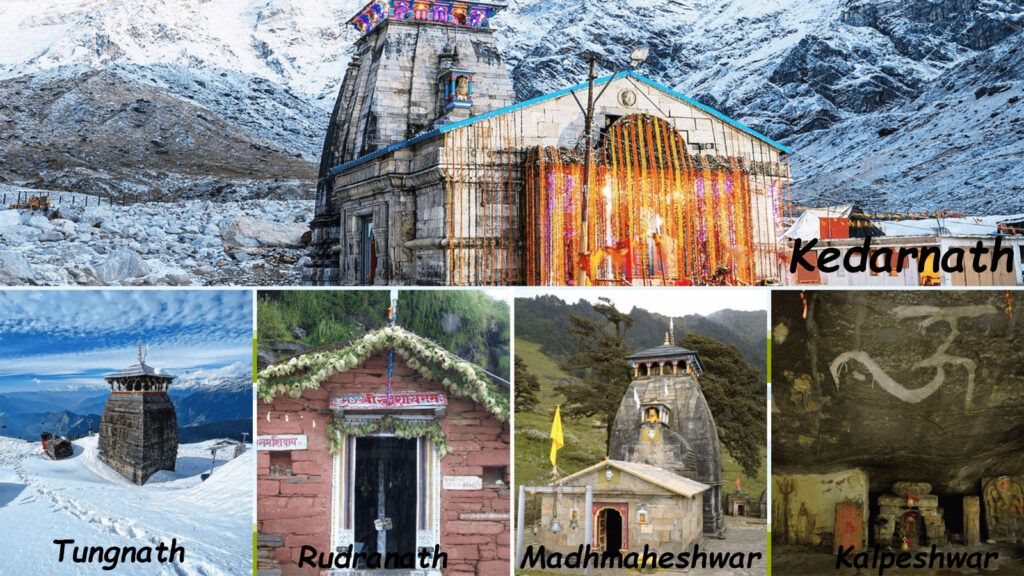
Contents
- 1 History of Panch Kedar Yatra:
- 2 Legend of Panch Kedar Yatra:
- 3 Significance of Panch Kedar Yatra:
- 4 Myths and beliefs of Panch Kedar Yatra:
- 5 Where are Panch Kedar(List)?
- 6 Panch Kedar Travel Route Plan:
- 7 Best Time for Panch Kedar Trek
- 8 Panch Kedar Travel registration:
- 9 FAQ:
- 9.0.1 Q: When is the best time to visit the Panch Kedar temples?
- 9.0.2 Q: How do I get to the Panch Kedar temples?
- 9.0.3 Q: What is the difficulty level of the Panch Kedar trek?
- 9.0.4 Q: What kind of gear do I need for the Panch Kedar trek?
- 9.0.5 Q: What are the religious and cultural significance of the Panch Kedar temples?
- 9.0.6 Q: What are some of the other things I can do in the Panch Kedar region?
History of Panch Kedar Yatra:
The history of the Panch Kedar Yatra is closely linked to the legend of the Pandavas. After the war, the Pandavas were seeking Lord Shiva’s forgiveness for the sins they had committed. Shiva, however, was angry with them and tried to avoid them. He disguised himself as a bull and hid in the Garhwal Himalayas.
The Pandavas eventually found Shiva and begged for his forgiveness. Shiva agreed to forgive them, but only if they could build temples to him in five different places where his body parts had fallen. The Pandavas did as they were instructed and built the Panch Kedar temples.
The Panch Kedar Yatra is a challenging pilgrimage, as the temples are located in remote and mountainous areas. However, it is a very rewarding experience for pilgrims, as it offers the opportunity to visit some of the most sacred Shiva temples in the world.
The Panch Kedar Yatra is typically undertaken during the summer months, when the weather is more favorable for trekking. The pilgrimage usually begins at Kedarnath, the most famous of the Panch Kedar temples. From Kedarnath, pilgrims trek to the other four temples, following a route that takes them through some of the most beautiful scenery in the Himalayas.
The Panch Kedar Yatra is a spiritual journey for many pilgrims. It is an opportunity to connect with Lord Shiva and to seek his blessings. The pilgrimage is also a challenging physical test, and it requires a great deal of endurance and determination to complete.
Legend of Panch Kedar Yatra:
The legend of the Panch Kedar Yatra is a popular Hindu pilgrimage that takes devotees to five Shiva temples in the Garhwal region of the Himalayas. The temples are Kedarnath, Madhmaheshwar, Tungnath, Rudranath, and Kalpeshwar.
The legend goes that after the Pandavas won the Kurukshetra War, they were filled with guilt for the violence they had committed. They sought Lord Shiva’s forgiveness, but he refused to see them. The Pandavas then searched for Shiva throughout the Himalayas, but he continued to elude them.
Finally, the Pandavas found Shiva hiding in the form of a bull at Guptkashi. Bhima, the strongest of the Pandavas, tried to grab the bull’s tail, but Shiva disappeared and reappeared in five different forms at five different locations. The Pandavas built temples at each of these locations, and the five temples are now known as the Panch Kedar.
According to another version of the legend, Shiva appeared to the Pandavas in a dream and told them that he had scattered his body parts in five different places. He instructed the Pandavas to build temples at each of these locations and worship him there.
The Panch Kedar Yatra is a challenging pilgrimage, but it is also a very rewarding one. The five temples are located in some of the most beautiful and remote places in the Himalayas. The trek to the temples is long and arduous, but it is also an opportunity to experience the natural beauty of the Himalayas and to learn about the rich culture and history of the region.
The Panch Kedar Yatra is typically done in the summer months, when the weather is more pleasant. However, the temples are open all year round. Devotees who complete the Panch Kedar Yatra are believed to be blessed by Lord Shiva and to have their sins forgiven.
Here is a brief description of each of the five Panch Kedar temples:
Kedarnath Temple
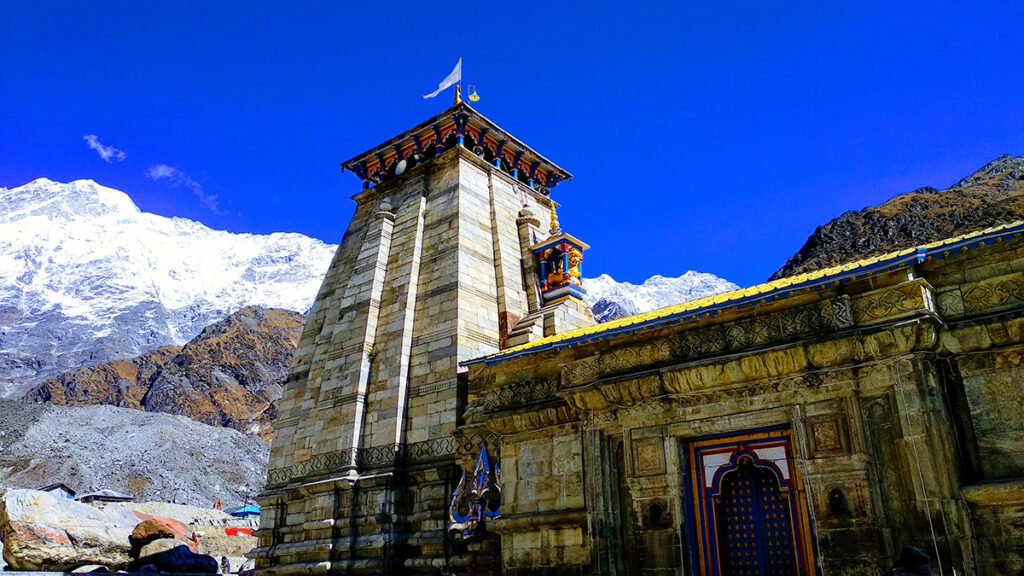
Kedarnath Temple is the most important of the Panch Kedar temples. It is believed that the Pandavas from the Hindu epic Mahabharata worshipped Lord Shiva here after the Kurukshetra War.
The Kedarnath Temple is located in a remote area of the Garhwal Himalayas, and it can only be reached by trekking. The trek to Kedarnath Temple is challenging, but it is also very rewarding. The trekkers are treated to stunning views of the Himalayas, and they also get to experience the unique culture and traditions of the Garhwal region.
Tungnath Temple
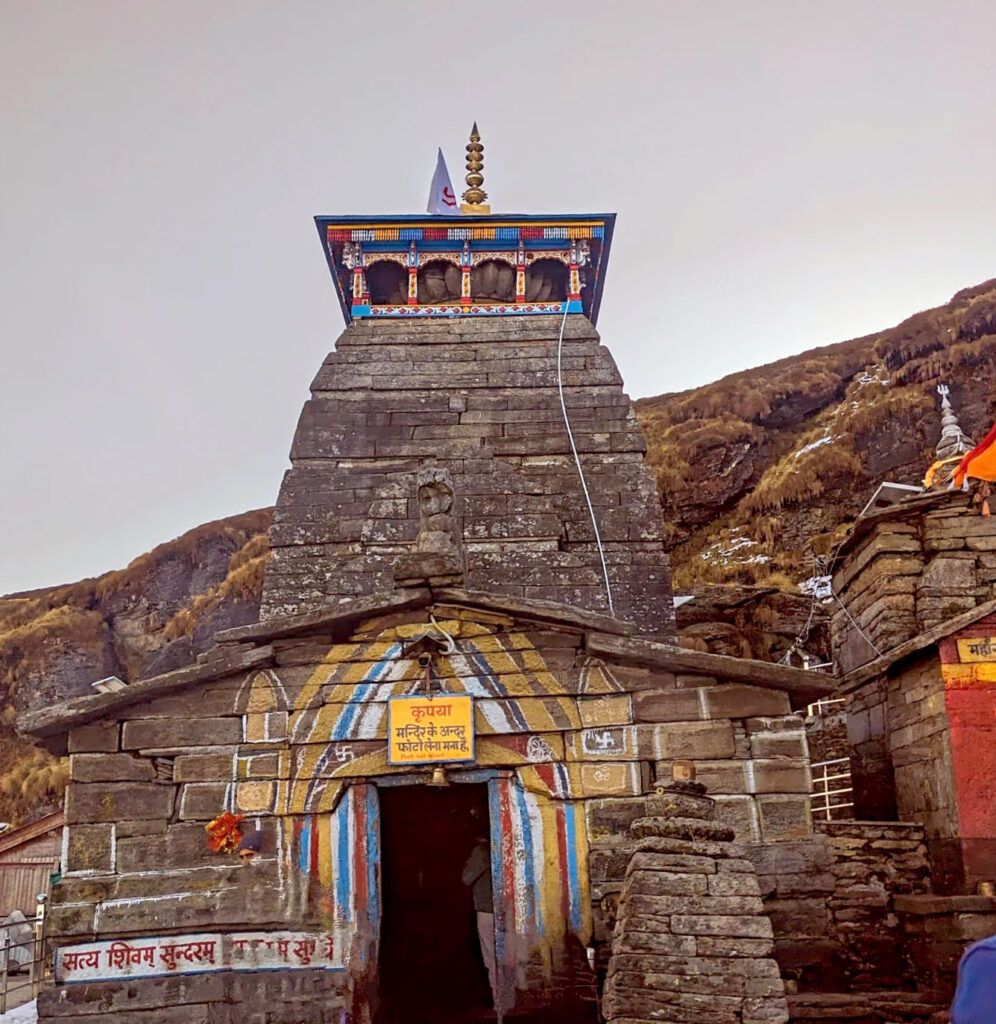
Tungnath Temple is the third highest of the Panch Kedar temples. It is located on the Tungnath peak, which offers stunning views of the Himalayas.
Tungnath Temple is dedicated to Lord Shiva’s arms. It is believed that the Pandavas found Shiva’s arms here after he disappeared in the form of a bull.
Rudranath Temple

Rudranath Temple is the second highest of the Panch Kedar temples. It is located in a remote area of the Garhwal Himalayas, and it can only be reached by trekking.
Rudranath Temple is dedicated to Lord Shiva’s face. It is believed that the Pandavas found Shiva’s face here after he disappeared in the form of a bull.
Madhyamaheshwar Temple
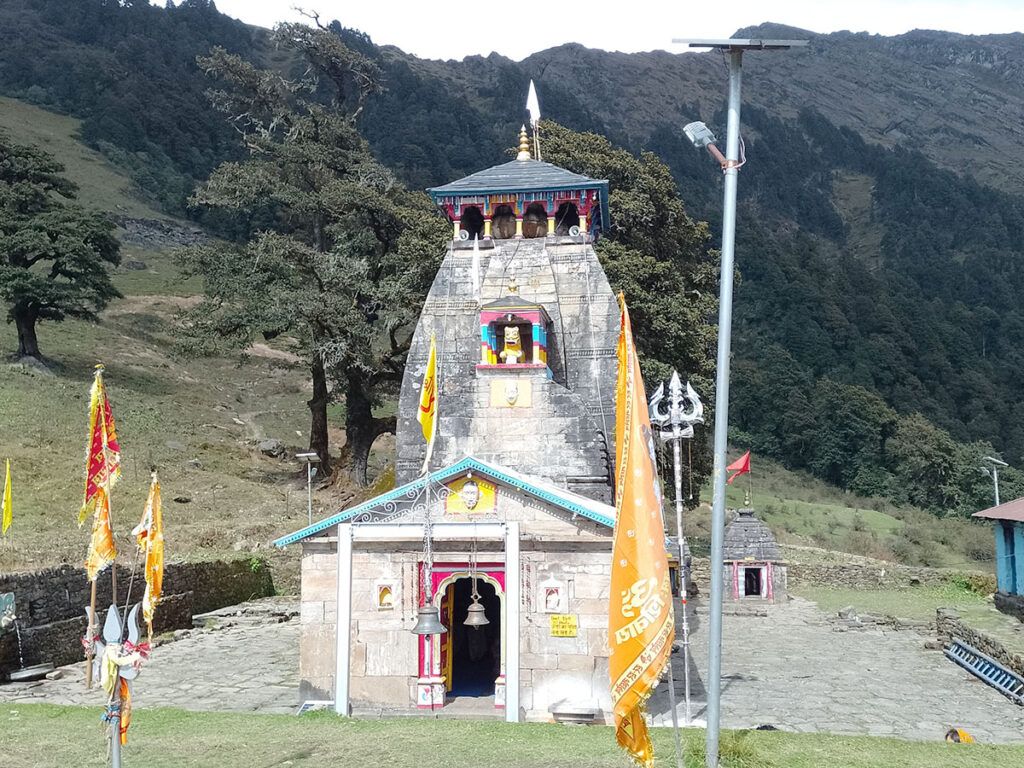
Madhyamaheshwar Temple is the fourth highest of the Panch Kedar temples. It is located in a remote area of the Garhwal Himalayas, and it can only be reached by trekking.
Madhyamaheshwar Temple is dedicated to Lord Shiva’s navel. It is believed that the Pandavas found Shiva’s navel here after he disappeared in the form of a bull.
Kalpeshwar Temple
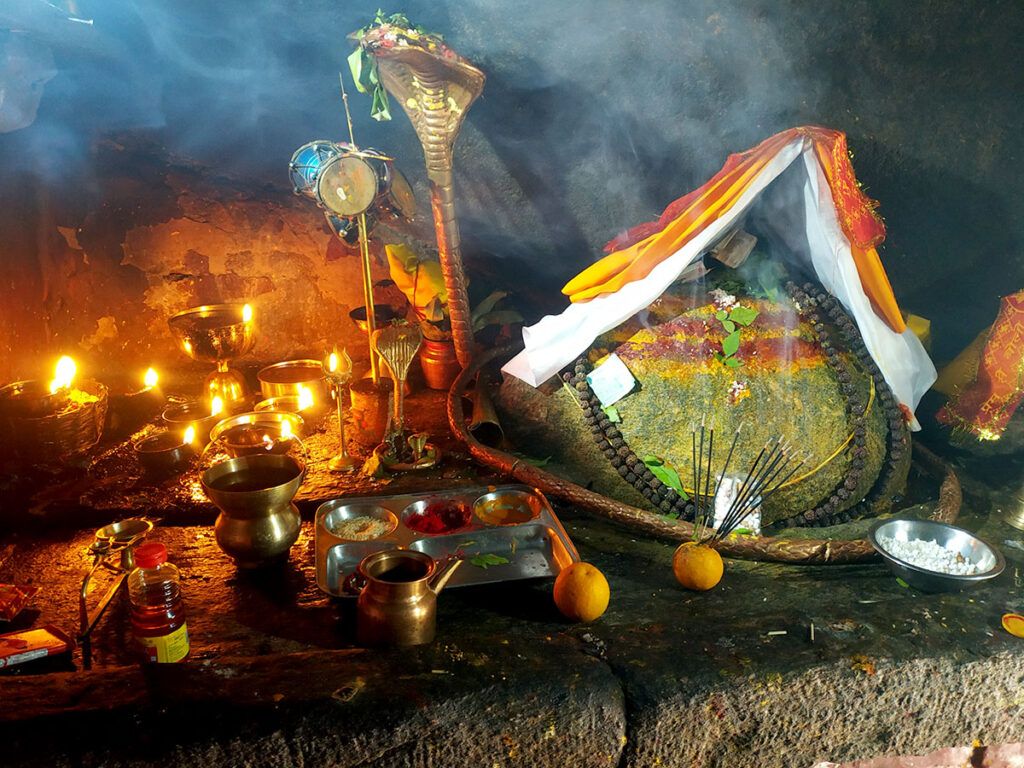
Kalpeshwar Temple is the least elevated of the Panch Kedar temples. It is located in a remote area of the Garhwal Himalayas, and it can only be reached by trekking.
Kalpeshwar Temple is dedicated to Lord Shiva’s hair. It is believed that the Pandavas found Shiva’s hair here after he disappeared in the form of a bull.
Significance of Panch Kedar Yatra:
- Religious significance: The Panch Kedar temples are among the most sacred Shiva temples in the world. According to Hindu mythology, the five temples represent different parts of Lord Shiva’s body:
- Kedarnath: the hump of the bull
- Tungnath: the arms
- Rudranath: the face
- Madhyamaheshwar: the navel
- Kalpeshwar: the hair and head
- Spiritual significance: The Panch Kedar Yatra is a challenging but rewarding pilgrimage. It requires physical and mental endurance, as well as a deep devotion to Lord Shiva. Pilgrims who complete the Yatra are said to be absolved of their sins and achieve moksha (liberation from the cycle of birth and death).
In addition to its religious and spiritual significance, the Panch Kedar Yatra is also a popular tourist destination. The temples are located in some of the most beautiful and remote parts of the Himalayas. The trek to the temples is challenging but rewarding, and offers stunning views of the mountains and valleys.
Here are some of the benefits of completing the Panch Kedar Yatra:
- Spiritual upliftment: The Panch Kedar Yatra is a journey of self-discovery and spiritual growth. It is a time to reflect on one’s life and to seek Lord Shiva’s blessings.
- Physical and mental strength: The Panch Kedar trek is a challenging one, but it is also a rewarding one. Pilgrims who complete the trek develop greater physical and mental strength.
- Inner peace: The Panch Kedar Yatra is a time to let go of one’s worries and to experience inner peace.
- Connection with nature: The Panch Kedar temples are located in some of the most beautiful and remote parts of the Himalayas. Pilgrims on the Yatra have the opportunity to connect with nature and to experience the beauty of the mountains and valleys.
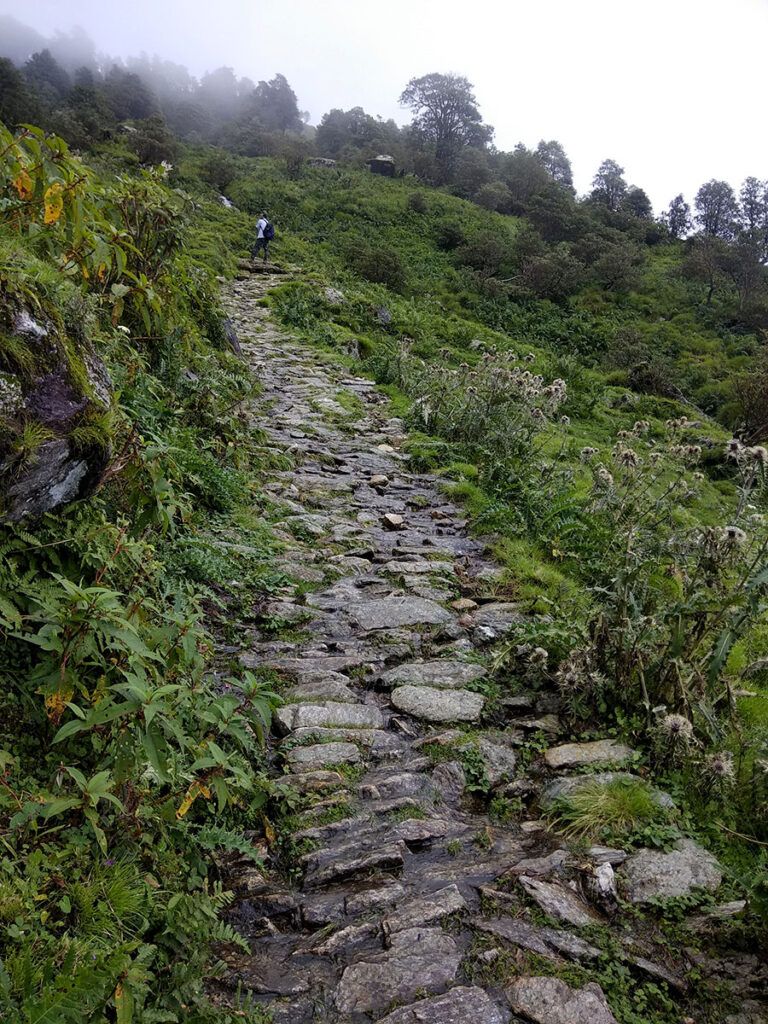
Myths and beliefs of Panch Kedar Yatra:
Myths and beliefs associated with the Panch Kedar Yatra:
- The most popular myth associated with the Panch Kedar Yatra is that each of the five temples represents a different part of Lord Shiva’s body. Kedarnath represents the hump, Tungnath represents the arms, Madhyamaheshwar represents the navel, Rudranath represents the face, and Kalpeshwar represents the hair and head.
- It is believed that performing the Panch Kedar Yatra washes away all sins and leads to moksha (liberation from the cycle of birth and death).
- The Panch Kedar temples are also believed to be very powerful and miraculous. Many devotees believe that their prayers are always answered when they visit these temples.
Here are some other myths and beliefs associated with the Panch Kedar Yatra:
- It is believed that the Panch Kedar temples are located in the Chakras (energy centers) of the human body. Visiting these temples is said to balance and energize the chakras.
- The Panch Kedar temples are also said to be connected to the five elements of nature: earth, water, fire, air, and ether. Visiting these temples is said to bring devotees into harmony with the natural world.
- The Panch Kedar Yatra is a very challenging pilgrimage, but it is also very rewarding. Many devotees believe that the journey itself is a spiritual experience.
Where are Panch Kedar(List)?
The Panch Kedar temples are considered to be among the most sacred pilgrimage sites in Hinduism. They are also known for their challenging treks, which offer stunning views of the Himalayas.
The Panch Kedar temples are visited in a specific order, from Kedarnath to Kalpeshwar. Kedarnath is the most important of the five temples, and it is believed that the Pandavas from the Hindu epic Mahabharata worshipped Lord Shiva here after the Kurukshetra War.
The other four Panch Kedar temples are located in remote areas of the Himalayas, and they can only be reached by trekking. The treks to the Panch Kedar temples are challenging, but they are also very rewarding. The trekkers are treated to stunning views of the Himalayas, and they also get to experience the unique culture and traditions of the Garhwal region.
The best time to visit the Panch Kedar temples is during the summer months (April to June) and the autumn months (September to October). During these months, the weather is pleasant and the treks are easier to do. However, it is important to note that the Panch Kedar temples are closed during the winter months due to heavy snowfall.tunesharemore_vert
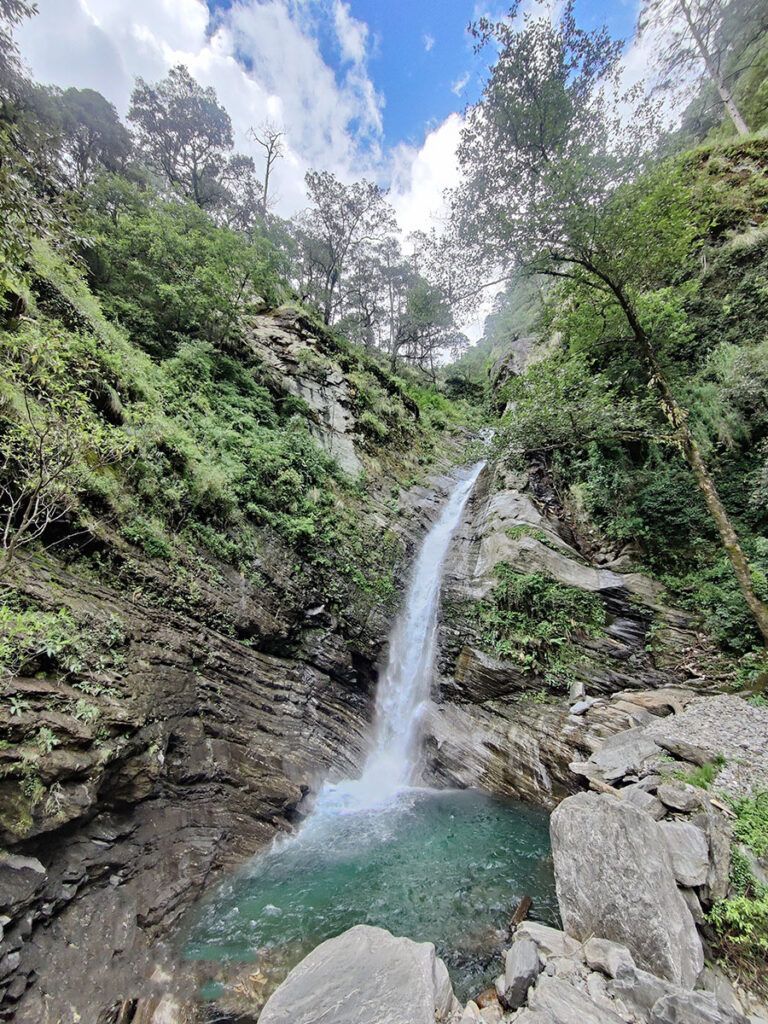
Panch Kedar Travel Route Plan:
Day 1: Arrive in Haridwar and check into your hotel.
Day 2: Drive to Joshimath, a town in the Garhwal Himalayas.
Day 3: Trek to Kalpeshwar Temple, the first of the Panch Kedar temples.
Day 4: Trek to Sagar Village, the base camp for the trek to Rudranath Temple.
Day 5: Trek to Rudranath Temple, the second of the Panch Kedar temples.
Day 6: Trek back to Sagar Village.
Day 7: Drive to Chopta, a village in the Garhwal Himalayas.
Day 8: Trek to Tungnath Temple, the third of the Panch Kedar temples.
Day 9: Trek to Chandrashila, a peak near Tungnath Temple that offers stunning views of the Himalayas.
Day 10: Trek back to Chopta.
Day 11: Drive to Gaurikund, the base camp for the trek to Kedarnath Temple.
Day 12: Trek to Kedarnath Temple, the most important of the Panch Kedar temples.
Day 13: Trek back to Gaurikund.
Day 14: Drive to Haridwar and depart for home.
This is just a suggested itinerary, and you can customize it to fit your interests and fitness level. For example, if you are interested in trekking, you can extend your trip to include treks to other Himalayan destinations, such as Hemkund Sahib or Valley of Flowers. You can also choose to stay longer at each temple to have more time to explore the surrounding area.
Here are some additional tips for planning your Panch Kedar pilgrimage:
- The best time to visit the Panch Kedar temples is during the summer months (April to June) and the autumn months (September to October). During these months, the weather is pleasant and the treks are easier to do. However, it is important to note that the Panch Kedar temples are closed during the winter months due to heavy snowfall.
- It is important to be physically fit before attempting the Panch Kedar treks. The treks are challenging and require a good level of endurance.
- Be sure to pack appropriate clothing and gear for the treks. The weather in the Himalayas can change quickly, so it is important to be prepared for all types of conditions.
- It is a good idea to hire a local guide for the treks. The guides can help you navigate the trails and provide information about the temples and the surrounding area.
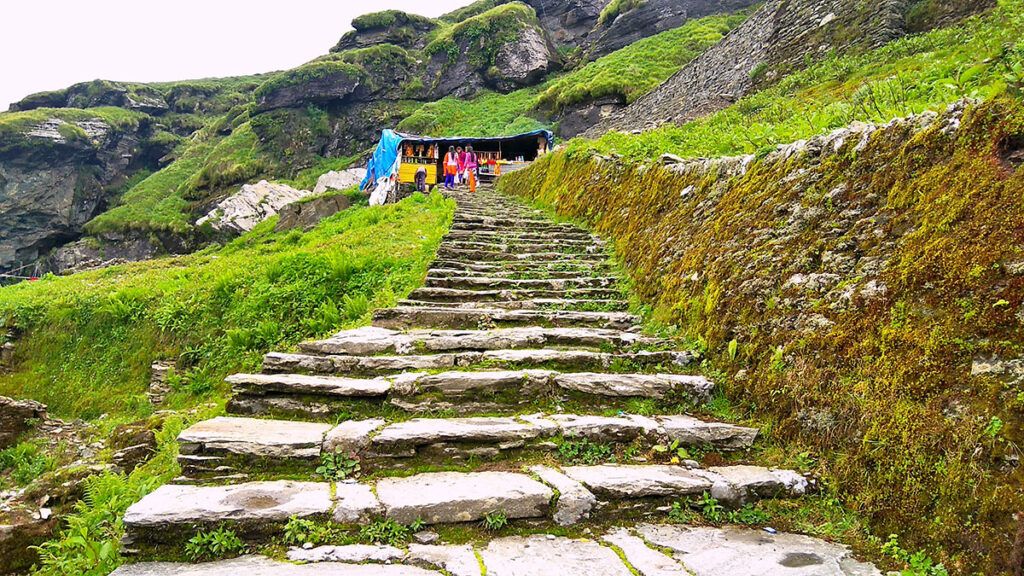
Best Time for Panch Kedar Trek
The best time for the Panch Kedar trek is during the summer months of April to June and the autumn months of September to October. During these months, the weather is pleasant and the treks are easier to do. The skies are clear and the views are stunning. The temperatures are also mild, ranging from 13 to 17 degrees Celsius during the day and 0 to 5 degrees Celsius at night.
However, it is important to note that the Panch Kedar temples are closed during the winter months due to heavy snowfall. The trails are also dangerous and difficult to navigate during this time.
Here is a more detailed breakdown of the best time to visit each of the Panch Kedar temples:
- Kedarnath Temple: April to June and September to October
- Tungnath Temple: May to June and September to October
- Rudranath Temple: May to June and September to October
- Madhyamaheshwar Temple: May to June and September to October
- Kalpeshwar Temple: April to June and September to October
If you are planning to do the Panch Kedar trek in its entirety, it is best to start your trek in early May or early September. This will give you enough time to complete the trek before the monsoon season arrives in June or the winter season arrives in November.
It is also important to keep in mind that the Panch Kedar trek is a challenging trek. It is important to be physically fit and to have experience trekking in high altitudes before attempting the trek. It is also a good idea to hire a local guide for the trek.
Panch Kedar Travel registration:
To register for the Panch Kedar trek, you can either visit the official website of the Uttarakhand Tourism Development Board (UTDB) or download the Tourist Care Uttarakhand app.
On the UTDB website, go to the “Panch Kedar Yatra” page and click on the “Register Now” button. You will be asked to create an account and provide your personal details, such as your name, address, and contact information. You will also need to provide details of your next of kin.
Once you have completed the registration process, you will receive a confirmation email. You will need to print out this email and carry it with you on your trek.
FAQ:
Q: When is the best time to visit the Panch Kedar temples?
A: The best time to visit the Panch Kedar temples is during the summer months of April to June and the autumn months of September to October. During these months, the weather is pleasant and the treks are easier to do. The skies are clear and the views are stunning. The temperatures are also mild, ranging from 13 to 17 degrees Celsius during the day and 0 to 5 degrees Celsius at night.
Q: How do I get to the Panch Kedar temples?
A: The Panch Kedar temples are located in remote areas of the Garhwal Himalayas, and they can only be reached by trekking. The nearest town to the Panch Kedar temples is Joshimath, which is accessible by road from Haridwar and Dehradun.
To reach Joshimath from Haridwar, you can take a shared taxi or a bus. The journey takes around 6-7 hours. From Dehradun, the journey to Joshimath takes around 5-6 hours.
Once you reach Joshimath, you will need to hire a porter or a guide to help you with your trek to the Panch Kedar temples.
Q: What is the difficulty level of the Panch Kedar trek?
A: The Panch Kedar trek is a challenging trek. The trails are steep and rocky, and there are several high altitude passes to cross. The trek is also long, covering a total distance of around 160 km.
It is important to be physically fit and to have experience trekking in high altitudes before attempting the Panch Kedar trek. It is also a good idea to hire a local guide for the trek.
Q: What kind of gear do I need for the Panch Kedar trek?
A: Here is a list of essential gear that you will need for the Panch Kedar trek:
- Trekking shoes or boots
- Trekking pants and shirts
- Thermal underwear
- A warm jacket
- A hat and gloves
- Sunglasses
- Sunscreen
- Insect repellent
- A water bottle
- A headlamp or flashlight
- First-aid kit
- Snacks and energy bars
Q: What are the religious and cultural significance of the Panch Kedar temples?
A: The Panch Kedar temples are among the most sacred pilgrimage sites in Hinduism. They are believed to be the places where Lord Shiva manifested himself in five different forms.
The Panch Kedar temples are also important cultural landmarks. They are located in some of the most remote and scenic areas of the Garhwal Himalayas.
Q: What are some of the other things I can do in the Panch Kedar region?
A: In addition to visiting the Panch Kedar temples, there are a number of other things you can do in the Panch Kedar region. Here are a few suggestions:
- Trek to the Valley of Flowers, a UNESCO World Heritage Site
- Visit Hemkund Sahib, a sacred Sikh shrine
- Trek to Chandrashila, a peak that offers stunning views of the Himalayas
- Visit the Auli ski resort
- Explore the villages and hamlets of the Garhwal Himalayas

2 Comments